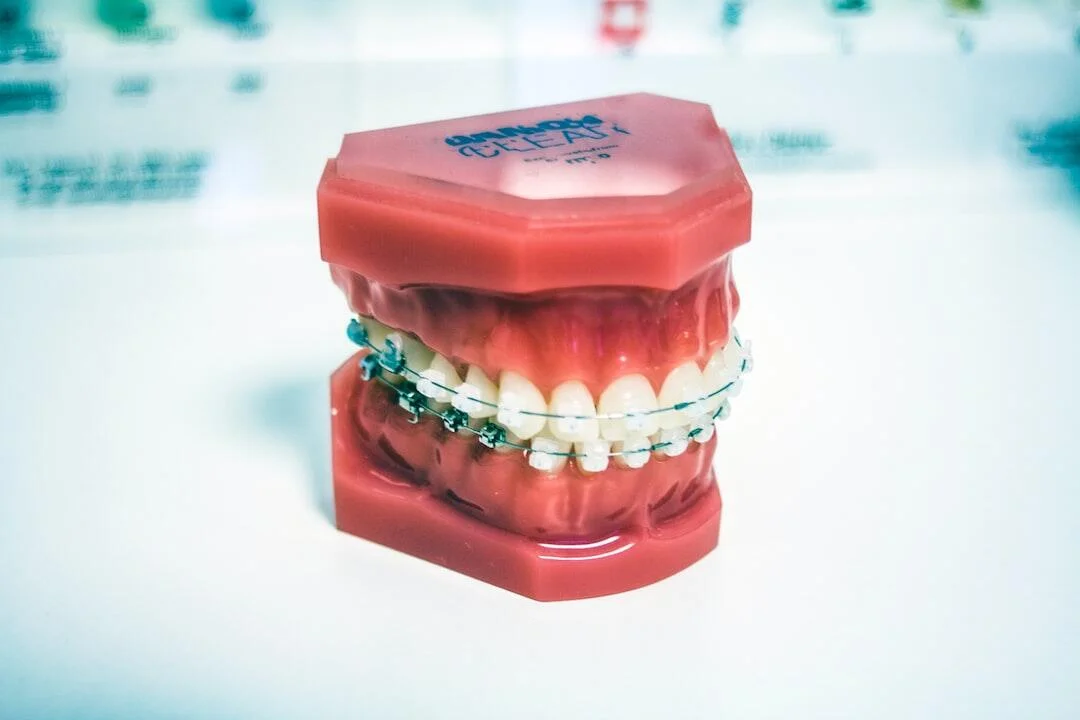HEALTH
What to Expect During a Mole Laser Removal Procedure

Have you been considering mole laser removal? It’s natural to wonder about the process. What should you expect during the procedure? This guide will walk you through each step.
We aim to ease any concerns you may have. From preparation to recovery, we’ve got you covered. Ready to learn more? Let’s dive in and discover the details.
Consultation
The first step in the mole laser removal process is the consultation. During this appointment, you will meet with a dermatologist or qualified medical professional. They will examine the mole or moles in question closely. It is important to determine if laser removal is a suitable method for your situation. You should be prepared to answer questions about your medical history.
The doctor will need to know if you have any underlying health conditions. Open communication is key during this phase. The consultation is also a great time to discuss mole removal cost. Understanding the financial aspect of the procedure is crucial. The doctor can provide a detailed breakdown of the expected expenses.
You may also ask about payment plans or insurance coverage. The benefits and risks of mole laser removal will be explained thoroughly. Your doctor might also show before-and-after photos of previous patients.
Seeing these results can give you a better idea of what to expect. Lastly, feel free to ask any questions or express any concerns. Your comfort and satisfaction are of utmost importance during the consultation process.
Preparation
Before undergoing mole laser removal, proper preparation is essential to ensure the best outcome. Your doctor will provide specific instructions tailored to your needs. One common step is to avoid direct sun exposure for a few weeks prior to the procedure. This helps prevent any complications related to skin sensitivity. You might also be advised to stop using certain skincare products.
For example, retinoids and exfoliants can make your skin more sensitive. Stopping these products a few days before the procedure is crucial. Another important tip is to stay hydrated by drinking plenty of water. Hydrated skin heals more efficiently and can handle the laser treatment better.
On the day of the procedure, cleanse your skin gently but thoroughly. Removing any makeup, creams, or lotions from the target area is necessary. Your doctor might apply a local anesthetic to minimize discomfort. This makes the process more tolerable and less painful.
Wearing comfortable clothing that allows easy access to the treatment area is also beneficial. If you’re nervous, practicing relaxation techniques can help calm your mind. Remember, being well-prepared will contribute to a smoother laser removal experience.
The Procedure
The procedure for using laser to remove moles is straightforward and efficient. It typically begins with the application of a local anesthetic. This numbs the area around the mole, making the process more comfortable for you.
Once the anesthetic has taken effect, the doctor will use a specialized laser device. The laser emits concentrated light beams aimed at the mole. These light beams work to break down the pigment cells within the mole. The mole gradually becomes lighter and eventually fades away.
The entire session may last anywhere from a few minutes to half an hour. This depends on the size and number of moles being treated. You will feel little to no discomfort due to the anesthetic, though some patients report a mild tingling sensation.
Protective eyewear will be provided to shield your eyes from the laser’s intensity. The precision of the laser ensures that only the mole is targeted, leaving the surrounding skin unaffected. After the procedure, you might notice some redness and slight swelling.
Post-Procedure Care
Caring for your skin after mole removal surgery is crucial to ensure proper healing and optimal results. First and foremost, keep the treated area clean and dry. Your doctor will likely advise you to gently cleanse the area with mild soap and water.
After cleaning, pat the area dry with a clean towel-do not rub, as this can irritate the skin. Apply any prescribed ointments or creams as directed to prevent infection and promote healing. It is also important to keep the area protected from direct sunlight to avoid complications.
If you must go outside, use sunscreen with a high SPF on the treated area. You may notice some redness and swelling, which is normal and should subside within a few days. Avoid picking at scabs or peeling skin, as this can lead to scarring.
Keep the area moisturized to help with the healing process. As your skin heals, it is essential to stay hydrated and maintain a healthy diet, aiding in faster recovery. If you experience any unusual symptoms, such as excessive pain or signs of infection, contact your doctor right away.
Potential Risks and Side Effects
Mole laser removal is generally safe, but it does come with some risks and side effects. Some people may experience redness and swelling around the treated area. This is normally mild and goes away after a few days. There can also be minor pain or discomfort which is usually manageable. Infection is possible, although this is rare when proper care is taken.
Scarring could occur, especially if you pick at the healing skin. Some patients might notice changes in skin color where the mole was. This can be lighter or darker than your normal skin tone. Blistering is another potential side effect, but it usually subsides on its own.
Allergic reactions to the numbing cream used can happen but are uncommon. If you notice any unusual symptoms, it is important to contact your doctor. They can provide advice or treatment if complications arise. Taking care to follow post-procedure instructions reduces most risks.
All About a Mole Laser Removal Procedure
Mole laser removal is a safe and effective method to get rid of unwanted moles. By following the proper steps and taking good care of your skin, you can expect good results.
Always consult with a qualified professional and follow their advice. Remember, being well-informed and prepared makes the process smoother and safer.
If you decide on mole laser removal, you are on the way to improving your skin’s appearance and health.
Looking for more tips and ideas? We’ve got you covered. Check out some of our other posts now.
Want to learn more? Visit our website for more like this.
HEALTH
Breaking the Stigma: Embracing Your Crooked Teeth With Braces

Imagine a world where perfection is the goal, and crooked teeth feel like a setback. But, what if we flipped the script? Think of braces not as a hassle, but as an exciting journey toward self-love. Having crooked teeth with braces is more than chasing a perfect smile; it’s a cool adventure in taking care of ourselves and boosting our confidence.
Let’s wear our smiles big, bold, and proud, braces shining, and cherish every step of this incredible journey. After all, the true beauty of our smiles lies in their uniqueness-crooked teeth and all.
Let’s celebrate every quirky curve and twist in our smiles because that’s what makes them genuinely ours.
The Journey to Acceptance
Getting braces on crooked teeth is like starting a journey towards loving yourself more. At first, it’s all about getting used to them – not just how they feel on your teeth, but also how you feel about yourself.
It’s a chance to see your smile with braces as something special about you. Along the way, you learn to be strong and patient as you watch your smile change. Remember, beauty takes time to unfold.
The Power of Community
Joining a group of people who are also wearing braces can help you feel less alone. You can find these groups online, on social media, or even among your friends and family.
Talking about what you’re going through, sharing advice, and celebrating little wins together can make you feel supported. It helps you remember that wearing braces doesn’t change how valuable you are.
Redefining Beauty Standards
Beauty is really about being yourself and brave enough to show who you are. When you decide to wear braces, you’re helping change what people think is beautiful.
Remember, every smile is special, and braces make your smile’s story even more interesting. By not sticking to old ideas of beauty, you’re not just helping yourself, but also making the world see beauty in a wider way.
Celebrating Every Milestone
Every little tweak, every new wire, and those first few days of soreness? They’re all important steps on your journey. It’s good to celebrate these moments because they show you’re making progress.
You could take pictures every month to see how things are changing, or maybe treat yourself after you get your braces tightened. Celebrating the small wins makes the whole experience better. It’s not just about getting a great smile; it’s about becoming the best version of yourself.
Fostering Self-Compassion
It’s really important to be kind to yourself when dealing with crooked teeth and braces. Imagine treating yourself like you would a good friend. There might be days when braces make you uncomfortable or doubt yourself.
But, if you can be nice to yourself and remember that you’re just fine no matter how your teeth look, you’ll start feeling better about yourself. This kindness to yourself helps you feel stronger emotionally while you’re going through your braces treatment.
Education as a Tool for Change
Learning about the best orthodontic treatment helps get rid of any wrong ideas. Knowing that braces aren’t just for looks but are actually about making your oral health better can change how people see them.
When folks get how having teeth that aren’t straight might mess with their dental health and how braces can fix that, they start thinking about health, not just beauty. Sharing real facts about all the pluses, not just how it makes your smile better, helps everyone be more okay with and get orthodontic care.
Braces as a Symbol of Self-Care
Thinking of braces as self-care rather than just about looks can change how we see teeth straightening. Getting braces is a way to invest in your health and happiness in the long run. It means you’re putting yourself first, showing that having healthy teeth matters to you.
As a symbol of self-care, here are the different kinds of braces that you can choose from:
Metal Braces
The most common type of braces, metal braces are made of stainless steel and have metal brackets that are attached to each tooth with a wire running through them. metal teeth braces are the most noticeable types of braces but also the most affordable.
Ceramic Braces
Ceramic braces work similarly to metal braces, but instead of metal brackets, they use clear or tooth-colored ceramic ones. This makes them less noticeable and a popular choice among adults.
Lingual Braces
Lingual braces are placed on the back of the teeth instead of the front, making them virtually invisible from the outside. They also work similarly to metal braces but can be more uncomfortable and take longer to adjust to.
Aligners (Invisalign)
Aligners are a popular choice for those looking for an almost invisible option. These are clear plastic trays that fit over the teeth and gradually shift them into place. They need to be replaced every two weeks as the teeth move. Aligners can be removed for eating and brushing, making them a more convenient choice. According to this dentist in Saratoga Springs NY, Invisalign must be worn at least 22 hours a day to get the best possible result.
The Evolution of Orthodontic Technology
Orthodontic technology has improved, making braces less noticeable and more comfy. Now, there are clear aligners and ceramic braces for a more discreet look.
This is great because it changes how we think about braces – they’re not just the traditional metal ones anymore. Orthodontic treatment can be tailored to what you need and want, making the whole experience way less scary and a lot more attractive.
Embracing the Beauty of Crooked Teeth with Braces
Getting braces for crooked teeth is more than just about looks. It’s a journey to finding and accepting yourself. This journey teaches us to be patient, to keep going, and to take good care of ourselves.
Having braces is a way to show we’re taking care of our health and questioning the usual ideas of what looks good. Each progress we make with braces is a step not just to a better smile, but also to feeling more confident in ourselves. In the end, crooked teeth with braces teach us that real beauty comes from being true to ourselves and cherishing what makes us unique.
So, braces are not just a temporary thing; they’re an important part of our story.
HEALTH
Breaking the Chains: Overcoming the Stigma of Addiction

Addiction is a complex and challenging disease that affects millions of people worldwide. Yet, despite its prevalence, addiction continues to be surrounded by stigma and misconceptions. The stigma associated with addiction can be a significant barrier to seeking help and receiving adequate treatment. In this article, we’ll explore the impact of stigma on individuals with addiction and highlight the importance of seeking support from drug rehab in Lexington and IOP facilities to overcome these challenges.
Understanding Addiction Stigma:
Addiction stigma refers to the negative attitudes, beliefs, and stereotypes associated with individuals who struggle with addiction. This stigma can manifest in various ways, including social exclusion, discrimination, and judgmental attitudes from others. Stigma can be particularly harmful as it can prevent individuals from seeking help, lead to feelings of shame and guilt, and hinder recovery efforts.
Impact of Stigma on Recovery:
The stigma associated with addiction can have profound effects on an individual’s recovery journey. Stigma can make individuals reluctant to seek treatment, fearing judgment or rejection from others. It can also lead to self-stigmatization, where individuals internalize negative beliefs about themselves, leading to feelings of worthlessness and hopelessness. Additionally, stigma can create barriers to accessing healthcare and support services, further complicating the recovery process.
Challenging Stigma Through Education:
One of the most effective ways to combat stigma is through education and awareness. By increasing understanding of addiction as a disease, rather than a moral failing, we can help reduce stigma and promote empathy and support for individuals in recovery. Education can also help dispel common myths and misconceptions about addiction, such as the belief that it is a choice or a sign of weakness.
Supportive Environments for Recovery:
Creating supportive environments for individuals in recovery is essential for overcoming stigma. Drug rehab in Lexington and IOP facilities in Atlanta provide safe and nurturing environments where individuals can receive the support and care they need to overcome addiction. These facilities offer a range of services, including detoxification, therapy, counseling, and support groups, all tailored to meet the unique needs of individuals in recovery.
Personal Stories and Advocacy:
Personal stories of recovery can be powerful tools for challenging stigma and inspiring hope. Sharing stories of recovery can help break down stereotypes and show that recovery is possible. Additionally, advocacy efforts aimed at changing policies and practices that contribute to stigma can help create a more supportive and inclusive society for individuals with addiction.
Holistic Approaches to Recovery:
Holistic approaches to addiction treatment can also help reduce stigma by addressing the underlying issues that contribute to addiction. These approaches focus on treating the whole person, including their physical, emotional, and spiritual well-being. By incorporating holistic therapies such as yoga, meditation, and art therapy, individuals can develop coping strategies and resilience that support long-term recovery.
Community Support and Involvement:
Building supportive communities that are inclusive of individuals in recovery is crucial for overcoming stigma. Community-based organizations and support groups, such as Alcoholics Anonymous (AA) and Narcotics Anonymous (NA), provide valuable peer support and encouragement for individuals in recovery. These groups offer a sense of belonging and acceptance that can help individuals rebuild their lives free from the constraints of stigma.
Conclusion
In conclusion, overcoming the stigma of addiction is essential for promoting recovery and supporting individuals in their journey towards wellness. By challenging stigma through education, creating supportive environments for recovery, sharing personal stories, advocating for change, and embracing holistic approaches to treatment, we can create a more compassionate and understanding society for individuals with addiction. Seeking support from drug rehab in Lexington and IOP facilities is a crucial step towards breaking the chains of stigma and reclaiming lives from addiction.
HEALTH
Exploring the Benefits of Creatine in the Best Supplement Stack for Muscle Gain

Are you searching for the best supplement stack for muscle gain? The quest for the perfect combination can be complex.
Among the myriad of options, one stands out significantly-creatine. This powerhouse ingredient is indispensable in the realm of muscle gain. It’s not just about increasing size; it’s about enhancing strength and accelerating recovery.
Delving into how creatine magnifies the effects of other supplements reveals the true potential of your stack. Unlock the secrets to optimal muscle gain with us.
Understanding Creatine
Creatine is a natural chemical that is found in muscle cells. It is best known for helping the body make energy during short, intense workouts. It is one of the supplements that has been studied the most and has been shown to help athletes do better.
When eaten, it raises the body’s phosphocreatine level, which is needed to make new ATP when you work out. This makes you stronger, builds muscle, and speeds up the recovery process. Creatine is good for athletes, but it can also help with brain function and mental fatigue.
It’s safe for most people when they take the recommended amounts, despite what some people think. Adding creatine to a stack of supplements can help you gain muscle and do better in your workouts.
The Science Behind Creatine’s Effectiveness
The main reason why creatine works so well is that it can quickly make ATP, which is the energy source for muscle contractions. When you do high-intensity exercises, your muscles lose phosphocreatine.
Taking creatine supplements raises these phosphocreatine levels, which lets you work out for longer and harder. Studies have shown over and over that taking creatine makes people stronger and builds more muscle. It makes cells more hydrated, which makes muscles bigger.
In addition, creatine stops proteins from breaking down, which helps muscles grow even more. All of these reasons explain why creatine is so important for improving performance.
Creatine as a Powerhouse Performance Enhancer
Creatine is one of the best performance boosters because it can improve athletic skills better than anything else. Phosphocreatine levels rise significantly, which changes how our muscles make and use energy during intense workouts.
This leads to long periods of high-intensity performance, which is what every athlete who wants to push their limits wants. Notably, creatine doesn’t just improve physical performance; it also makes it easier to think clearly when you’re stressed.
The key to its effectiveness is how quickly it restores ATP. In addition, the fact that it increases the volume of muscle cells helps explain why muscles get bigger and stronger. Creatine is a great supplement for athletes that can be used for a long time without any problems.
Maximizing Muscle Growth
Getting enough creatine isn’t the only way to boost muscle growth; you also need to watch what you eat, work out, and rest. Proteins are very important because they are what muscles are made of.
When you do progressive overload training regularly, your muscles are always being pushed to get stronger. Staying hydrated is important for muscle recovery and function.
Taking rest days in your schedule helps your muscles grow and repair themselves. Taking creatine supplements can help with these efforts by giving you more energy and performance.
The Foundation of Muscle Growth
A complex balance of strength training, nutrition, and recovery is what makes muscle growth possible. The first step is to put your muscles to the test by lifting weights or doing other resistance training.
This causes tiny tears in the muscle fibers. When the body is under stress, it repairs and strengthens the fibers, which makes muscles grow.
Nutrition is very important; a diet high in protein helps muscles grow and repair themselves. Also, it’s important to stay hydrated because water is an important part of muscle cells.
Getting enough rest and sleep is important for recovery because it helps the body heal and get stronger. Taking creatine supplements can make these processes even better, which can help with performance gains and muscle growth.
Fueling Muscle Growth and Recovery
To help muscles grow and recover, you need to pay close attention to your diet, stay hydrated, and get enough rest. Proteins and carbs that you eat in the right amounts after a workout help muscles heal and glycogen levels rise.
It’s important to stay hydrated because water helps nutrients get to muscle cells. Taking creatine supplements can help you recover faster by making it easier for your body to make new ATP.
Getting enough sleep helps the body’s natural repair processes, which makes muscles grow. Planned days off keep you from overtraining and let your muscles fully recover. All of these parts work together to make a complete plan for improving muscle growth and recovery.
Delaying Muscle Fatigue for Extended Workouts
Keeping muscles from getting tired too soon is important for extending workouts and improving performance. Taking extra creatine is very important for this because it restores ATP levels. In turn, this makes it possible to keep up high-intensity efforts for longer.
A balanced diet and staying hydrated are also good ways to keep your energy up. Increasing your endurance over time is another benefit of progressive training.
Rest days are very important because they let the body heal and adjust. By using these tips, you can greatly delay the start of muscle fatigue, which will allow you to train harder and for longer periods.
Enhancing Blood Flow for Optimal Nutrient Delivery
Improving blood flow is essential for getting nutrients to muscles efficiently, which is good for health and performance in general. Better circulation makes sure that oxygen and important nutrients get to muscle tissues quickly, which helps them recover and grow faster.
Some supplements, like L-arginine and beetroot extract, have been shown to help blood flow by making blood vessels work better. Cardiovascular exercise regularly is also very important for keeping arteries healthy.
In addition to exercise, massage, and stretching can also help improve circulation. All of these strategies work together to help the body get nutrients to the places they are needed most.
Creatine Monohydrate vs. Other Forms
The form of creatine that has been studied the most and is used the most is creatine monohydrate. It gets good reviews for how well it works to build strength, bulk up muscles, and speed up recovery.
Monohydrate creatine is often chosen over other forms, like creatine ethyl ester or creatine hydrochloride, because it is cheaper and there is more evidence to support its benefits. Different forms say they are better at dissolving or absorption, but research doesn’t always back these claims up. The ease of use and effectiveness of creatine monohydrate make it a standard supplement for both athletes and fitness fans.
Understanding Creatine Loading and Cycling Protocols
When you load your muscles with creatine, you take higher doses for a short time to quickly saturate them. Then, you take a lower maintenance dose. This plan usually lasts for 5 to 7 days at a dose of 20 grams per day, and then the dose is lowered to 2 to 5 grams per day.
Take creatine for a few weeks or months, then stop for a while and start again. This is called “cycling creatine.” The goal of this method is to get the most out of creatine while also giving the body a break. It’s thought to help keep the body’s ability to respond to creatine.
However, research on why cycling is important hasn’t come to a clear conclusion. If you know these steps, you can make sure that taking creatine supplements fits your needs and goals.
The Importance of Proper Hydration with Creatine Supplementation
When taking creatine supplements, it’s very important to stay hydrated. Muscle cells hold on to more water when you take creatine, so you need to drink more water to stay hydrated.
Dehydration can counteract the performance-boosting effects of creatine by making muscles work less well. Also, drinking enough water helps creatine get to the muscles more efficiently, which increases its benefits.
It also helps keep digestive problems like cramps and bloating from happening when you use creatine. When taking your creatine dosage, experts say you should drink at least 8 to 12 glasses of water every day.
Addressing Safety Concerns
There are a lot of worries about the safety of taking creatine supplements, but most of them are not backed up by research. Studies have shown over and over that taking creatine in the recommended amounts is safe for healthy people to use for a long time.
Some minor side effects, like gas or stomach pain, may happen, but they usually only last a short time. Buying creatine from a reputable source is important to make sure the product is pure and free of any impurities.
People who already have kidney problems should talk to a doctor before starting to take creatine. It is safe to use as long as it is monitored regularly and the recommended doses are followed.
Potential Side Effects of Creatine Supplementation
Supplementing with creatine is widely used and studied, and most people who do it don’t have any major side effects. One person, though, might feel some minor discomforts, like bloating or stomach problems.
This is usually because the body is getting used to having more creatine in it. Muscle cramps are a less common side effect that can usually be helped by drinking lots of water.
You can also gain weight by holding on to water, but this is usually only a short-term problem. To keep side effects to a minimum, it’s important to take the medicine as prescribed.
The Role of Nutrition and Exercise in Maximizing Creatine Benefits
The best way to get the most out of creatine is to combine it with good nutrition and exercise. A diet high in protein and carbs helps the body absorb creatine and heal muscles faster.
Muscles fully use creatine for energy and growth when they are trained hard and regularly. It’s important to stay hydrated because water helps creatine get into muscle cells.
Planned rest days help muscles heal and grow, which makes creatine work better. Taking creatine at the right time, like right after a workout, can help you perform better and make more gains. A well-balanced diet, regular exercise, and creatine supplements work together to help athletes do better.
Integrating Creatine into Your Fitness Journe
If you want to improve your workout performance and recovery, adding creatine to your fitness routine is a smart move. Start with a loading phase to build muscle quickly. After that, switch to a maintenance dose.
For the best absorption, eat it with a healthy diet that is high in proteins and carbs. When taken at the right time after a workout, it can help with recovery and muscle growth.
Remember that staying hydrated is important when taking creatine supplements to make sure they work and to lessen the chance of side effects. It’s best to keep an eye on your fitness progress and make changes as needed. As long as you use creatine wisely and responsibly, it can help you reach your fitness goals much more quickly.
Maximizing Results
Getting the most out of creatine supplements requires a disciplined plan that includes good nutrition, exercise, and the right schedule for taking your workout supplements. Getting enough protein and carbs is important for taking in creatine and helping muscles recover.
Muscles use the extra energy that creatine gives them when they work out hard and regularly, which leads to more muscle strength and mass. It’s important to stay hydrated to help creatine work better and lower the risk of side effects. By following these rules, people can expect to see big changes in their performance and bodies over time.
It’s not just about piling on different products but selecting those that work harmoniously to enhance muscle growth, strength, and recovery. Wilsonsupplements.com offers a curated selection of products that are designed to work well together, optimizing your gains from every angle.
Discover Your Ultimate Best Supplement Stack for Muscle Gain
It might seem hard to find the best supplement stack for muscle gain, but knowledge and planning can help. To build muscle, you need creatine, whey protein, and BCAAs.
These make you stronger, last longer, and recover faster. Adapting this choice to your objectives will yield the best results.
From what you eat to how you work out, this all-around approach needs you to be consistent. Finally, the right stack helps you get stronger.

 ENTERTAINMENT5 days ago
ENTERTAINMENT5 days agoExploring the Kristen Archives: A Treasure Trove of Erotica and More

 ENTERTAINMENT1 day ago
ENTERTAINMENT1 day agoKiss KH: The Streaming Platform Redefining Digital Engagement and Cultural Currents

 TECHNOLOGY4 months ago
TECHNOLOGY4 months agoBlog Arcy Art: Where Architecture Meets Art

 LIFESTYLE4 months ago
LIFESTYLE4 months agoThe Disciplinary Wives Club: Spanking for Love, Not Punishment

 EDUCATION1 day ago
EDUCATION1 day agoLingrohub Platform: A Complete Student Access Guide

 ENTERTAINMENT3 weeks ago
ENTERTAINMENT3 weeks agoMonkeyGG2: Your Personal Gaming Hub

 TECHNOLOGY4 days ago
TECHNOLOGY4 days agoOurDream.ai Review: The Generative Art Engine Rewiring Imagination

 TECHNOLOGY1 day ago
TECHNOLOGY1 day agoCasibom: The Digital Alchemy Reshaping Systems, Society, and Self










